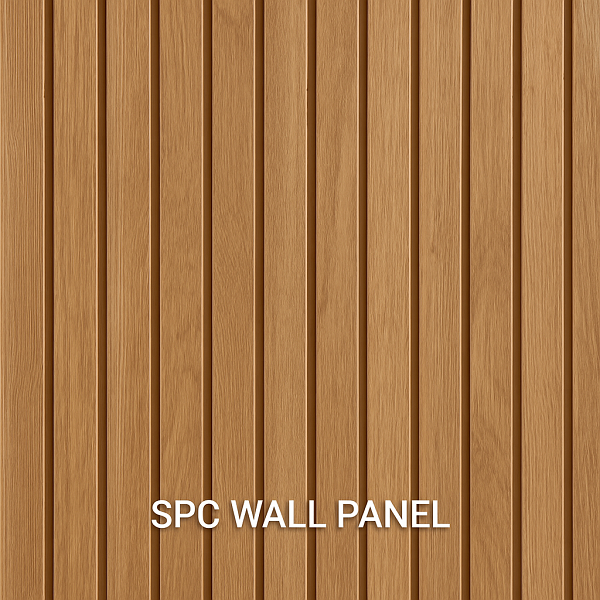Healthcare flooring plays a vital role in creating a safe, sanitary and comfortable environment for patients, staff and visitors. As technology and materials continue to evolve, choosing the right flooring for hospitals, clinics and other healthcare facilities requires a detailed understanding of functionality, compliance and aesthetics.
Key Requirements for Healthcare Flooring
Due to the harshness of healthcare environments, healthcare floors must meet stringent performance standards.
Here are the key requirements:
- Sanitation and Cleanliness: Flooring must be able to resist microbial growth and allow for frequent cleaning with disinfectants. Smooth, non-porous surfaces are ideal.
- Slip Resistance: Preventing slips and falls is critical, especially in high-traffic and wet areas.
- Durability: Flooring must be able to withstand high-intensity foot traffic, rolling medical equipment and chemicals.
- Acoustic Control: In patient care areas, noise reduction is essential to promote rest and recovery.
- Comfort and Safety: Anti-fatigue properties benefit staff who stand for long periods of time.
- Seamless Integration with Walls: Using complementary products such as SPC Wall Panel Systems, a harmonious and hygienic environment can be created.
Types of Medical Flooring Materials
Different areas of a healthcare facility require specific flooring materials.
Common choices include:
- Vinyl flooring: Known for its water resistance, durability, and easy maintenance. Commonly used in patient rooms and hallways.
- Rubber flooring: Provides superior comfort and slip resistance; ideal for operating rooms and nursing stations.
- Linoleum flooring: Made from natural materials, it is sustainable and antimicrobial, suitable for environmentally conscious medical design.
- Epoxy flooring: Highly durable and chemically resistant, it is ideal for laboratories and emergency rooms.
- SPC flooring: Stone polymer composite flooring is becoming more and more popular due to its strong core, water resistance, and easy maintenance. It pairs perfectly with SPC wallboard systems to provide a unified appearance and enhanced performance.
Zoning in Medical Flooring Design
Different areas within a healthcare facility have different flooring requirements.
Specifically as follows:
- Patient care area: Requires quiet, soft, hygienic flooring such as vinyl flooring or SPC flooring, and protects the wall with SPC wallboard cladding.
- Operating Rooms: Sterile, seamless flooring such as epoxy is required, and walls are easy to clean with SPC wall panel systems.
- Reception and Lobby: Aesthetics are critical; luxury vinyl tile (LVT) or SPC flooring is both stylish and practical.
- Corridors and Hallways: Durable, non-slip rubber or SPC flooring is suitable for these high-traffic areas.
- Restrooms: Waterproof and non-slip materials are essential. SPC flooring combined with SPC wall panel backing ensures complete waterproofing.
Advantages of Using SPC Flooring in Healthcare
SPC (Stone Polymer Composite) flooring is increasingly being adopted by healthcare facilities due to its many advantages:
- Waterproof: Ideal for areas prone to spills or moisture.
- Strong and Stable: Its dense core resists dents and warping.
- Easy to Clean: Low-maintenance surface, ideal for infection control.
- Comfortable: Provides better foot support than ceramic tile.
- Versatile Beauty: Available in a variety of textures and colors to complement interior designs, especially when paired with SPC wall panels.
SPC Wall Panels: A Complementary Solution
SPC wall panel systems are often paired with SPC flooring for comprehensive interior coverage.
Key benefits include:
- Seamless Design: Minimizes gaps where bacteria can grow.
- Quick Installation: The click-on system allows for fast and efficient installation.
- Durability: Resists scratches, stains, and impacts.
- Moisture Resistance: Suitable for wet areas such as bathrooms and labs.
- Flame Retardant: Enhances safety in critical care areas.
- Low Maintenance: Like SPC flooring, these panels are easy to clean and disinfect.
Maintenance and Lifetime Considerations
To ensure the longevity and sanitation of your healthcare flooring, follow these guidelines:
- Regular Cleaning: Use hospital-grade disinfectants on all surfaces.
- Preventive Care: Install entry mats and protective casters on equipment.
- Inspection: Regularly inspect seams for wear, damage, or lifting.
- Integrated Upgrades: When replacing flooring, consider updating walls with SPC wall systems to improve hygiene and aesthetics.
Sustainability and Compliance
Modern healthcare facilities are also focused on sustainability and compliance:
- Eco-friendly Materials: Products like linoleum and certain types of vinyl are low in volatile organic compounds (VOCs) and recyclable.
- Regulatory Standards: Flooring must meet ADA (Americans with Disabilities Act) requirements and fire safety codes.
- SPC Wall and Flooring Options: Many SPC products are now made with recycled materials and are certified for indoor air quality.
Choosing the right flooring for healthcare spaces requires a balance between functionality, safety, and design. Products like SPC flooring and versatile SPC wall systems offer modern solutions that meet the complex needs of healthcare environments. By understanding the needs of each area and the benefits of specific materials, facility managers and designers can create spaces that are not only safe and sanitary, but also comfortable and aesthetically pleasing.


































